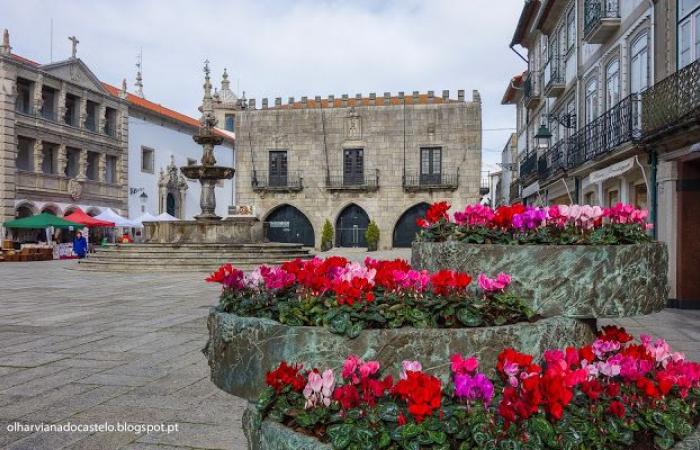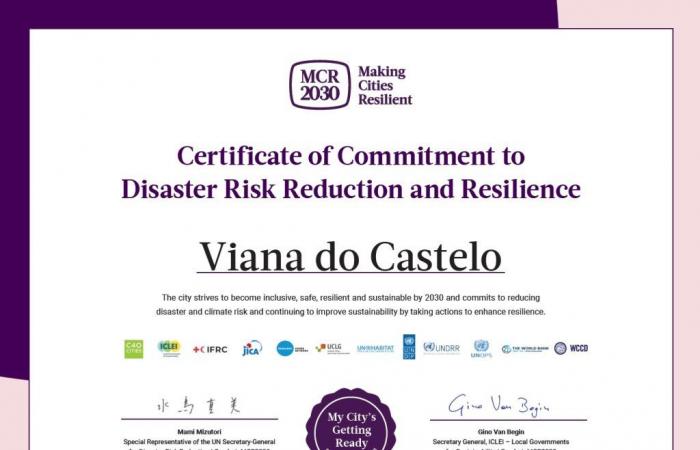Viana do Castelo City Council has just guaranteed membership in the Resilient Cities Network, committing to develop all necessary efforts to reduce risk with a focus on prevention, anticipate uncertainty and threat, resist disaster, through better relief and rapid recovery, involving local partners and the academic and scientific community, demonstrating the commitment and relevance of the topic of reducing the risk of serious accidents and catastrophes.
The “Resilient Cities Network”, also called the “United Nations Resilient Cities in Portugal” Program or “Resilient Cities in Portugal” campaign, was created in 2010 by seven municipalities following the International Strategy for Disaster Reduction, which encourages cities to implement measures that contribute to increasing resilience to disasters.
The accession of Portuguese municipalities to this Network places them in a privileged position, through which, together with their foreign counterparts, they will have access to training instruments and initiatives that promote the exchange of knowledge that aim to contribute to the development of innovative solutions aimed at reducing the risk of catastrophe.
By joining this network, which implements the Strategy based on the framework of the United Nations (UN), the Municipality of Viana do Castelo becomes committed and even more committed to developing Prevention, Preparation and Mitigation actions, to deal with Natural, Human and Technological Disasters at local level.
In this sense, the Municipality of Viana do Castelo has the task of involving as many agents as possible, including those from the scientific and academic communities, who are relevant in reducing risks and the size of catastrophes that may affect our territory.
Viana do Castelo has an area of 319 km2 and a population of almost 85 thousand people. The main natural and technological risks identified include forest fires and pandemics. It also presents a high risk of urban fires, heat waves, road accidents, transport accidents and land storage of dangerous goods.
As an example of the initiatives and good practices developed by the municipality of Viana do Castelo, it is worth highlighting the fact that an institutional and administrative framework is legally defined, as well as operational, which ensures an integrated response, namely, the Basic Law for Civil Protection (LBPC), the Integrated Protection and Relief Operations System (SIOPS), the Operations Management System (SGO), and the Law that defines the institutional and operational framework of Civil Protection within the scope of local authorities, establishing the organization of the Municipal Protection Service Civil Protection (SMPC) and defining the responsibilities of the Municipal Civil Protection Coordinator, in the development of the Civil Protection Basic Law. The President of the City Council is the Municipal Civil Protection Authority and holds the powers set out in the Basic Civil Protection Law, and is also President of the Municipal Civil Protection Commission.
The Municipality of Viana do Castelo has several structures, namely the Municipal Civil Protection Center (CMPC), headquarters of the Municipal Civil Protection Service, and where the various existing services are located; Municipal Civil Protection Commission (CMPC), a body that ensures coordination in matters of Civil Protection at the Municipal level; Municipal Civil Protection Service (SMPC), responsible for carrying out Civil Protection activities at the Municipal level; Municipal Operational Coordination Center (CCOM), which ensures, at the level of the Municipality of Viana do Castelo, the institutional coordination and operational articulation of the entities forming part of the Integrated Protection and Relief Operations System (SIOPS) and that all essential entities in the Relief Operations are coordinated with each other; Municipal Relief Operations Center (CCOM), which constitutes the Coordination Center, in the areas of Protection and Relief, Civil Protection and Municipal Security; Municipal Civil Protection Coordinator (CORMPC), who coordinates the Municipal Civil Protection Service, the Municipal Operational Coordinating Center and the Municipal Relief Operations Center; Sapadores Fire Company (CBSVC), which is assigned the responsibilities and powers arising from the Law; Municipal Committee for Integrated Rural Fire Management, whose mission is to coordinate integrated rural fire management programs; and Municipal Security Council, an entity with functions of a consultative nature, articulation, coordination, information and cooperation between entities that intervene or are involved in resolving public security problems.
In terms of financial resources, the Municipality has made a strong investment in the acquisition of strategic equipment in the area of Civil Protection, re-equipment of the Sapadores Fire Company (CBSVC) and the construction of new equipment such as the Municipal Civil Protection Center – CMPC, and improvement of existing infrastructure.
Regarding Good Practices implemented at the level of Disaster Risk Reduction/Resilience, these include Prevention and Planning Management Instruments, namely Municipal Relief Operations Center (CMOS), Municipal Master Plan (PDM), Municipal Plan of Emergency and Civil Protection (PMEPC), Municipal Forest Defense Plan against Fires (PMDFCI), Municipal Operational Plan (POM), Coastal Shore Plan – Caminha / Espinho, “Reforestation with Identity” Program, Municipal Security Council, Plans Event Coordination, Municipal Strategy for Adaptation to Climate Change, Geographic Information System (GIS) within the scope of Civil Protection and Warnings to the Population.
The following Institutional Coordination forums were formally constituted and with regular meetings: meetings of the Municipal Civil Protection Commission, meetings of the Municipal Commission for the Defense of the Forest Against Fires and participation in coordination meetings with other Directors, Coordinators of the District Civil Protection Services and the Municipal Civil Protection Coordinators.
Until January 2020, 36 Portuguese cities and towns were recognized by the UN as “Resilient Cities”. In the “Hyogo Framework for Action” and “Sendai Framework” (2015), a “European Forum for Disaster Risk Reduction” was established with the aim of sharing and debating disaster risk reduction issues on a global platform, which includes national platforms. In Portugal, the National Platform for Disaster Risk Reduction (PNRRC) is coordinated by the National Civil Protection Authority, which includes several representatives from entities related to Emergency, Security, Economy, Transport, Communications, Education, Agriculture, Forestry, Research Scientific, among others, as well as the National Association of Portuguese Municipalities (ANMP).
Tags: Viana Castelo Chamber joins Resilient Cities Network Gazeta Rural
--






